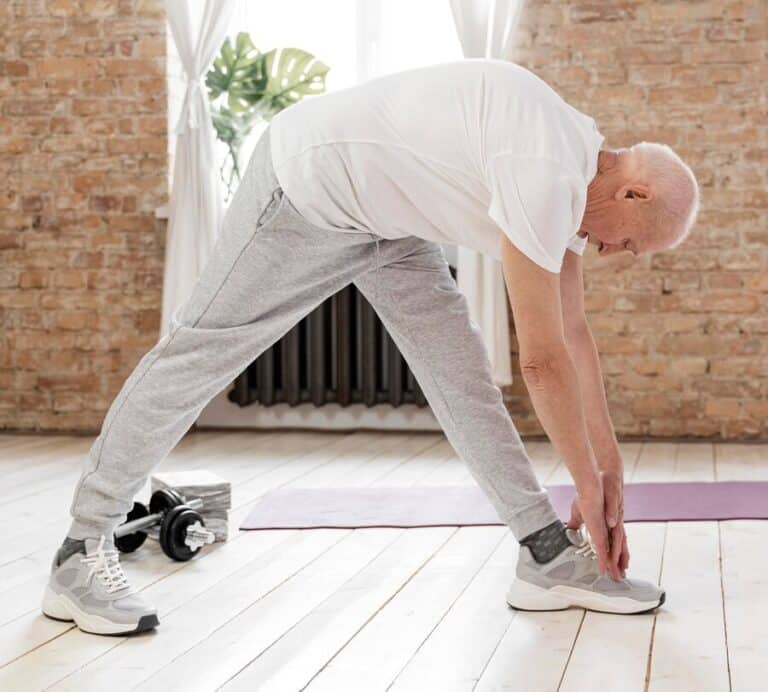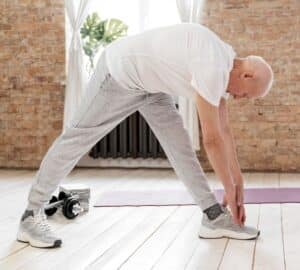As they age, most seniors experience decreased flexibility, leading to potential hamstring injuries and leg weakness. At Westmont of Culver City, a trusted provider of senior care services in Culver City, CA, we understand the importance of maintaining strong and flexible hamstrings for overall mobility and health in the elderly. This informative blog post will discuss the top five crucial hamstring stretches designed for seniors. By incorporating these exercises into their routine, seniors can prevent injuries, improve flexibility, and enhance their overall quality of life. Let’s explore the world of hamstring health for seniors.
Key Takeaways:
- Importance of Flexibility: As seniors age, it is crucial to prioritize flexibility to prevent hamstring injuries and overall leg weakness.
- Hamstring Strengthening Exercises: Glute bridge stretch, Good Morning stretch, and Single-leg hamstring curl are practical exercises for strengthening hamstrings in seniors and reducing the risk of injury.
- Professional Assistance: Trust Senior Health Care Solutions for expert guidance and assistance in practicing the best hamstring stretches for seniors to improve mobility and prevent injuries.
Understanding the Hamstring Muscle
What Is the Hamstring?
The hamstring is a set of muscles in the back of the thigh. These muscles are necessary for everyday movements such as standing, walking, and knee bending. While often overlooked, the hamstrings are crucial in our mobility and flexibility.
The Role of Hamstrings in Daily Activities
The hamstrings support basic movements like walking and standing and enable more complex actions like jumping and turning the hip. Unfortunately, these muscles can lose elasticity as we age, increasing the risk of hamstring injuries, especially among seniors. Strengthening the hamstrings through targeted exercises can help mitigate these risks and improve overall leg strength and flexibility for seniors.
Preparing for Stretching
Safety Tips Before You Begin
There’s nothing more important than safety when starting a new exercise routine, especially for seniors. Before beginning any hamstring stretches, it’s crucial to warm up your muscles with some light cardio and dynamic stretches. Remember to listen to your body; if you feel any sharp pain, stop immediately. Additionally, ensure you have a sturdy chair or counter nearby for balance support.
- Warm up with light cardio.
- Listen to your body.
- Have a support nearby.
After following these safety tips, you’ll be ready to confidently start your hamstring stretches.
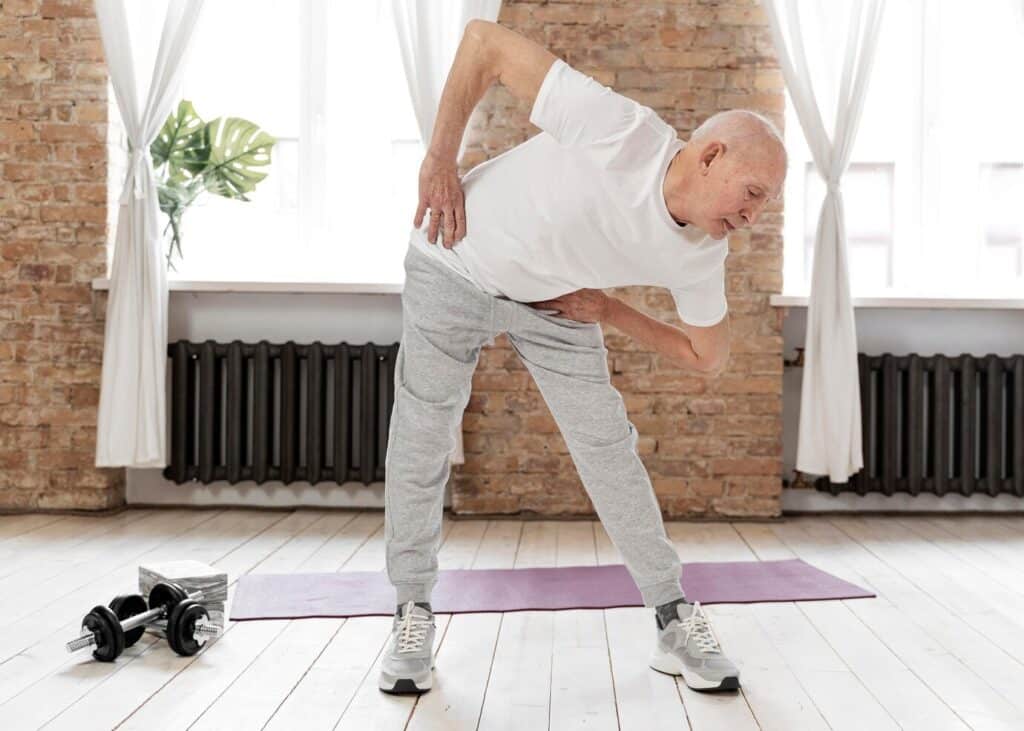
Senior Preparing Stretches
Understanding Your Limits
Understanding your body’s limits is vital to preventing injury and getting the most out of your stretching routine. Seniors may have decreased flexibility and muscle strength, so don’t push yourself too hard. Start slowly and gradually increase the intensity and duration of your stretches. An experienced trainer or physical therapist can help tailor a stretching program to your needs.
Plus, remember that consistency is critical to seeing improvements in flexibility and strength over time.
5 Essential Hamstring Stretches for Seniors
1. Seated Chair Stretch
Stretching is crucial for improving flexibility and preventing injuries, especially for seniors. One effective stretch is the Seated Chair Stretch, which can be done right from the comfort of a chair. Simply sit upright with one leg extended while keeping the other foot flat on the ground. Lean forward gently, feeling the stretch in your hamstring. Hold for 15-30 seconds and switch legs.
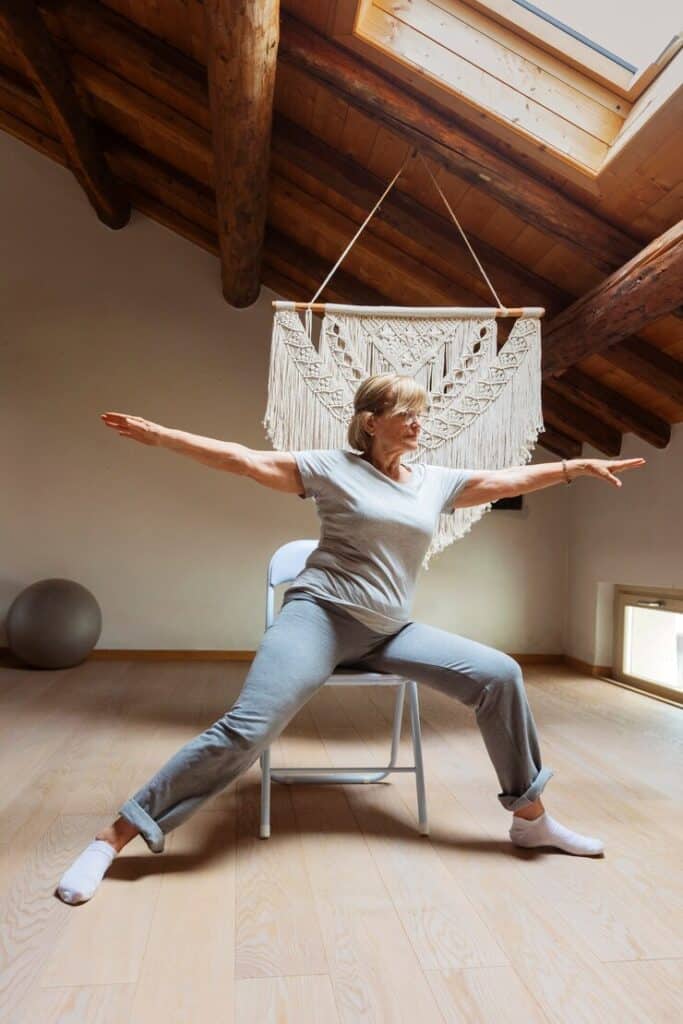
Seated Chair Stretch
2. Standing Hamstring Stretch
Chair hamstring stretch is another great way to increase flexibility in seniors. This stretch involves standing behind a chair and placing one foot on the chair seat. Slowly bend at the waist, keeping your back straight until you feel a gentle stretch in your hamstring. Hold for 15-30 seconds and switch sides.
Hamstring stretches are essential for seniors as they age, as they help maintain mobility and prevent injuries. Regularly practicing standing hamstring stretches can improve the range of motion and reduce the risk of strains or tears in the hamstring muscles.
3. Lying Down Stretch
Chair lying down stretch is a simple yet effective way to stretch the hamstrings. Lie on your back with one leg bent and one leg extended. Use a towel or resistance band around the foot of the extended leg and gently pull towards your chest until you feel a stretch in your hamstring. Hold for 15-30 seconds and switch legs.
The lying down stretch is beneficial for seniors as it helps improve flexibility in the hamstrings and promotes better circulation in the lower body. Incorporating this stretch into a daily routine can improve overall mobility and strength.
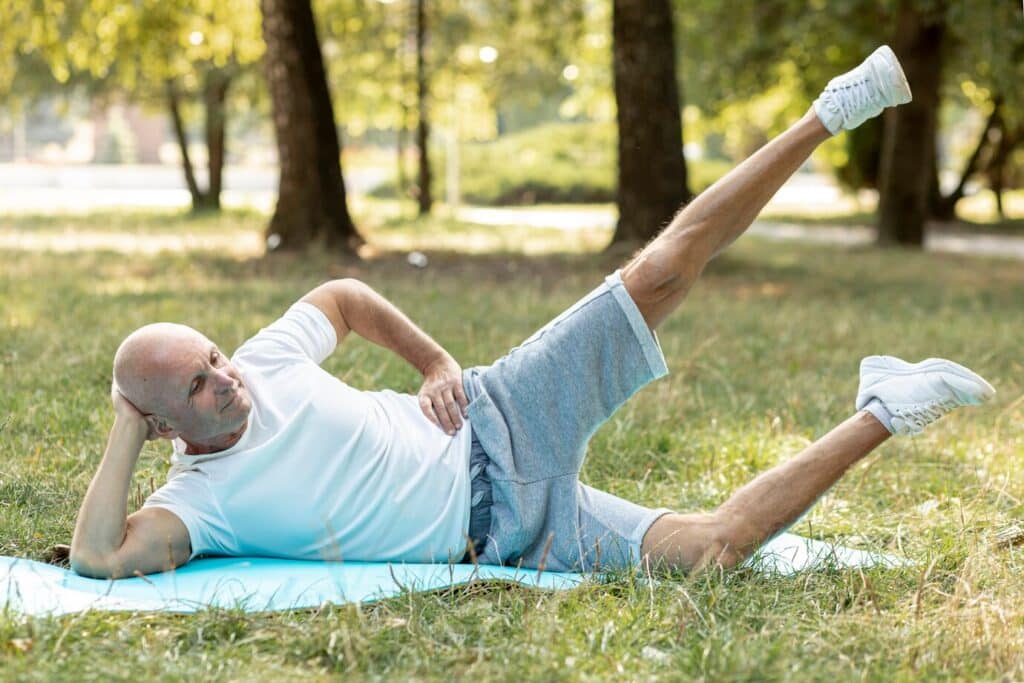
Lying Down Stretch
4. Towel or Strap Stretch
Seated towel or strap stretch is helpful for seniors to improve hamstring flexibility. Sit on the floor with your legs extended in front of you. Place a towel or strap around one foot and gently pull towards you, feeling the stretch in your hamstring. Hold for 15-30 seconds and switch legs.
It is essential to include the towel or strap stretch in a senior’s stretching routine to enhance hamstring flexibility and prevent muscle tightness. This stretch can also help improve the range of motion in the legs, promoting better mobility.
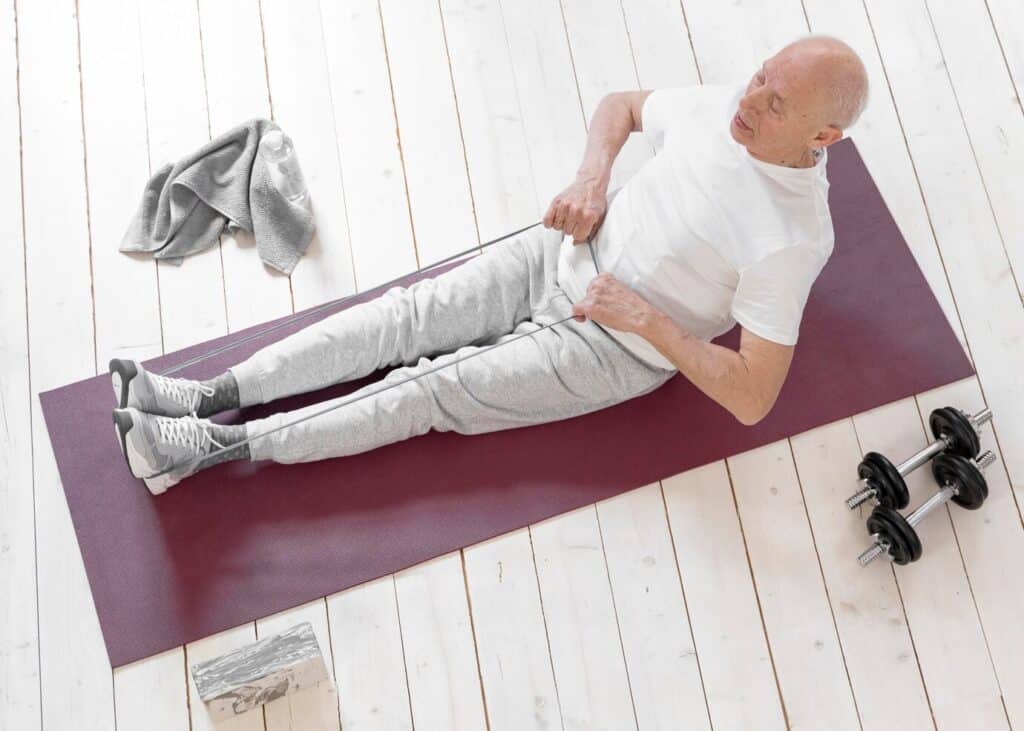
Towel or Strap Stretch
5. Wall Stretch
Towel Wall Stretch is another effective way for seniors to target their hamstrings. Sit on the floor with one leg against a wall and the other leg extended upward against the wall. Use a towel or strap to gently pull the extended leg closer to you, feeling the stretch in your hamstring. Hold for 15-30 seconds and switch legs.
With regular practice, the wall stretch can help seniors improve flexibility in the hamstrings and reduce the risk of muscle strains or injuries. This stretch enhances lower body mobility and ensures better overall leg strength.
Incorporating Hamstring Stretches into Your Routine
Frequency and Duration of Stretches
Keep in mind that consistency is critical when it comes to seeing improvements in flexibility and strength. Aim to perform hamstring stretches for seniors at least three times a week, with each session lasting around 10-15 minutes. Slow and controlled movements are vital to prevent injury and maximize the benefits of each stretch.
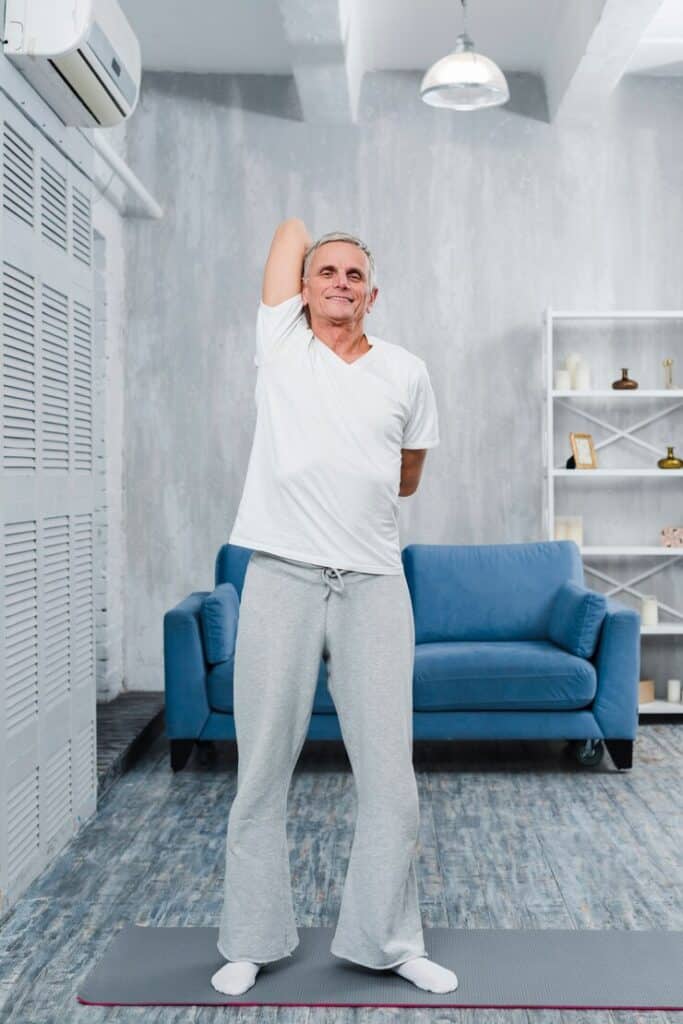
Standing Stretching
Tracking Progress and Staying Motivated
Motivated seniors may find it helpful to track their progress by noting down the number of repetitions and the level of difficulty of each stretch. Setting specific, measurable goals can provide a sense of accomplishment and keep you focused on your fitness journey. Plus, seeking guidance from a physical therapist or fitness professional at Westmont of Culver City can offer personalized support and encouragement to help you stay on track.
Summing up
So, whether your elderly loved one is in need of rehabilitation or long-term personal care, Westmont of Culver City is equipped to provide the best hamstring stretches to improve senior health. The hamstrings are crucial muscles that can weaken with age, leading to mobility issues and injury risks. By incorporating exercises like the glute bridge stretch, good morning stretch, and single-leg hamstring curl, seniors can strengthen their hamstrings and reduce the likelihood of injury. Trust in Westmont of Culver City’s physical therapists and nurses to guide seniors through these imperative stretches, promoting better flexibility, mobility, and overall health for our elderly residents. Contact us at 310-736-4118 for more information about hamstring stretches for seniors.
FAQ
Q: Why is it important for seniors to do hamstring stretches?
A: Hamstring stretches help seniors maintain flexibility, prevent injuries, and improve overall leg strength, which is crucial for daily activities like walking and standing.
Q: What are the benefits of the glute bridge stretch for seniors?
A: The glute bridge stretch strengthens the hamstrings, lower back, and glutes, promotes better posture, and helps alleviate back pain in seniors.
Q: How often should seniors perform hamstring stretches?
A: Seniors should aim to do hamstring stretches at least 2-3 times a week to see improvements in flexibility, strength, and mobility. It’s essential to consult with a healthcare provider before starting any new exercise routine.

